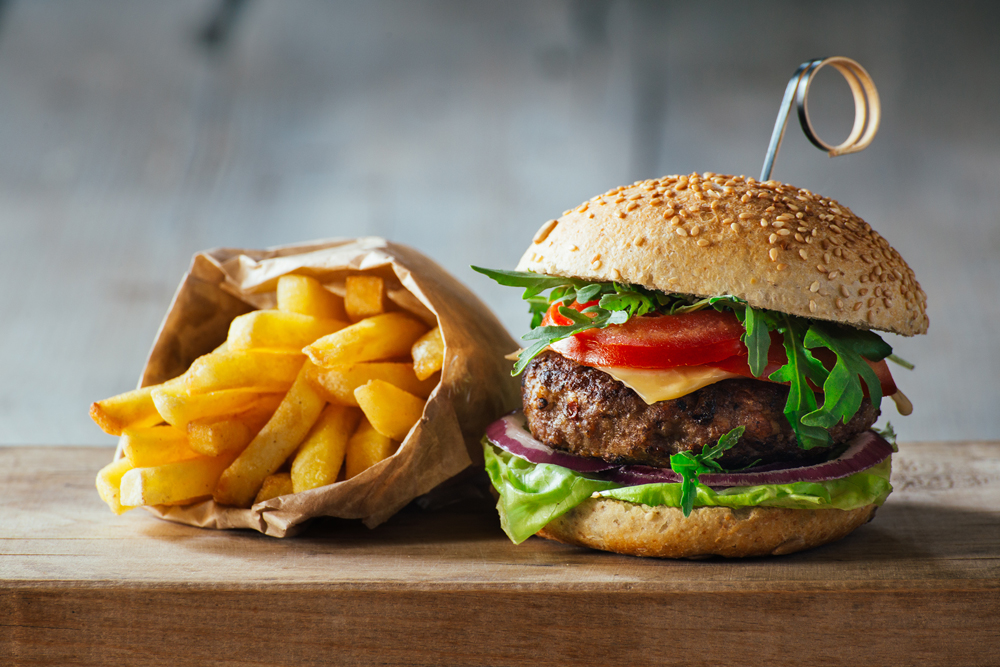Salt is an essential mineral. Made up of roughly 40% sodium and 60% chloride, salt is important for health and well-being. Too much sodium, however, is not only bad for your heart, it’s also bad for your overall health. It can increase your risk for high blood pressure, heart attack and heart failure, stroke, fluid retention and kidney disease, stomach cancer, and even osteoporosis.
When we talk to patients about sodium in their diet, many people think of the salt shaker. While adding salt to dishes, whether it’s in the kitchen or at the dinner table, is definitely one source of sodium in our diets, the majority of the sodium we consume comes from processed and restaurant foods. According to the Centers for Disease Control and Prevention, over 70% of the sodium that Americans consume comes from the foods we are eating. That’s why understanding what is in your food is so important.
Sodium In Food
Salt is a component of almost all foods, but the amount can vary considerably. Fruits and vegetables, for example, contain very low amounts of sodium, while many processed foods can have very high levels. This includes foods you are likely already aware of like pizza, bacon, potato chips and many frozen meals. Even foods many people think of as healthy can contain a lot of sodium.
Whole-wheat bread is one example, with some breads containing up to 400 milligrams (mg) of sodium per slice. Breakfast cereals, sports drinks, cottage cheese and other foods you may not suspect can contain high amounts of sodium, which is why we recommend reading nutrition labels to know how much sodium (along with other things like fat and sugar) is in the foods you consume.
How Much Sodium Is Too Much?
The current government dietary guideline for Americans is no more than 2,300 mg of sodium per day. However, the American Heart Association recommends an ideal limit of 1,500 mg per day for most adults.
A good place to start is figuring out how much sodium you are consuming. There are many free online resources for tracking your nutrition, or you can simply read labels and write down what you consume each day to get an idea of your daily sodium levels. If you are at or above the upper limit, you should cut back on your sodium-intake, but even people within the dietary guidelines can benefit from aiming closer to 1,500 mg or less.
How To Reduce Sodium-Intake
- Build your diet around fresh foods, including fruit, vegetables, whole-grains, legumes and beans, lean protein, and dairy.
- Read labels on packaged food, and choose products with the lowest amount of sodium.
- Cook at home, rather than eating out.
- Don’t add salt when you cook. Use onion, garlic, herbs and spices instead of salt to add flavor to your meals.
- Rinse canned beans and vegetables to dramatically reduce the sodium count (or better yet, choose “no salt added” varieties).
- When dining out, choose restaurants that provide nutritional information, so you can make informed decisions about what you eat.

Low-Sodium Burger & Fries
Just because you are cutting down on sodium, that doesn’t mean you can’t enjoy your favorite foods. There are loads of low-sodium or no-sodium versions available for all of the popular dishes you find in restaurants and supermarkets. Here are two delicious options for America’s favorite: burger and fries.
The Burger
Ditch the salt by preparing your burger with salt-free seasonings. Plus, skip the bun (or substitute with a low-sodium option), and you have a low-salt burger that doesn’t skimp on flavor.
Recipe: Sodium Girl
The Fries
Swap high-salt, high-fat fries for baked fries. Packed with flavor and oven-baked to crispy perfection, they are a great side to your favorite burger or to eat all on their own.
Recipe: Sodium Optional
The team at Advanced Cardiovascular Specialists consists of North Louisiana’s leading experts in cardiovascular health. To schedule an appointment to talk about your heart health, please call our office at (318) 798-9400.

